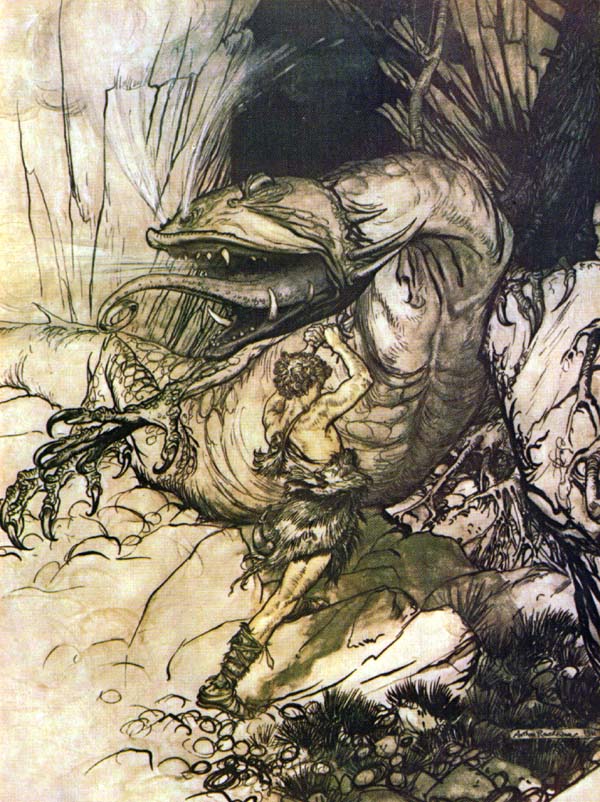
Siegried slays the dragon, in an illustration by Arthur Rackham. This is one of the set of illustrations for Wagner’s Ring operas that fascinated C.S. Lewis as a boy.
An article at Wonders and Marvels suggests that the legends of medieval dragons in Germany, most particularly that of Siegfried the Dragonslayer, may arise from fossil tracks still visible in that country.
Notably, conspicuous fossil trackways of two types of massive dinosaurs are found in Germany. In 1941, the German paleontologist H. Kirchner speculated that observations of Triassic dinosaur tracks in sandstone near Siegfriedsburg in the Rhine Valley of western Germany might have been the inspiration for the legend about the dragon Fafnir’s footprints.
I share this, of course, purely for your amusement. All sensible people know that dragons survived in Europe well into the early medieval period, when they were slain by Christian saints.
Hat tip: Mirabilis.

I turned on the TV once and there on the screen is a Komodo Dragon staring at the camera. I felt an electric shock of fear. So I wonder if they roamed the plains of Eurasia at some time in the past. They have bacteria in their mouth that cause burning sensations if bitten. I know just by the glance through the TV screen that he was a dragon in more than just name.
Komodo Dragons seriously give me the creeps. I don’t even want to look at them on TV. There’s something there just atavistically awful.